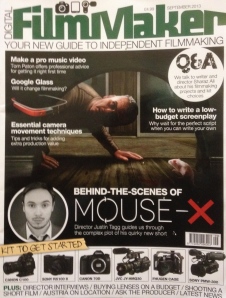Whilst the ability to create professional looking video has become much more accessible over the past few years, many struggle to achieve a certain style or ‘cinematic’ look within their footage due to the cost factor of high end, modern lenses. Technological advances have lead to a dizzying quantity of professional lenses, each boasting to enhance your video quality and improve access to versatility, but for the majority of amateur filmmakers, the option to shop around for that perfect lens or combination of lenses is out of reach. This need not be the case. The uprise of popularity for DSLR cameras has opened up a vast opportunity for cost saving experimentation and quality simply due to the ease of compatibility with older lenses through use of adapters.
The Canon FD lens mount first appeared with the introduction of the Canon F-1 SLR camera back in 1971. The FD mount replaced the formerly used bayonet mount popular amongst other SLR brands and was instantly popular until production ceased in 1987 with the dawn of the now commonplace EF lenses. At a basic level the FD mount offered increased survivability of your precious lenses through the manner in which the lens attached to the camera. Entitled the breech-lock, this mechanism ensured minimal contact of areas susceptible to wear. The build quality of these early lenses were also superior, constructed out of durable metal giving them a reassuring weight. These factors made Canon’s FD lenses a popular choice for professional and amateur enthusiasts alike.

Whilst the step forward to auto-focus lenses was revolutionary, the use of the FD lenses is still a viable option. Despite being obsolete from production, they are easy to come across through sources such as e-bay or even at your local car-boot sales or charity shops at significantly lower prices than modern auto-focus lenses.
At the time of release FD lenses were deemed optically superior to many other brands and while perhaps not meeting standards of top end modern video lenses, they are still capable of capturing beautiful imagery. For the up and coming amateur filmmaker, the lack of auto-focus should not be a burden as it impels the user to become practiced in the methods of following focus and gives a more hands on approach that brings you closer to your film. Many will agree that it is often a wise choice to sacrifice a perhaps unnecessary function in favour of high quality optics when choosing between an older lens and entry level modern lenses.
134 different FD lenses were produced during its 21 years of production and obviously some will be more suited to your project than others, but a good place to start would be with a 50mm prime lens. The Canon FD 50MM 1.8 is a very common and reliable lens but if in search of something providing more in terms of shallow depth of field or night time capabilities then the Canon FD 50mm 1.4 can also be picked up for relatively cheap. One thing to bear in mind when adapting SLR lenses to a camera with a non 35mm sensor is that you will be effectively increasing your focal length. This may not be a problem for certain shots but it would still be wise to seek out an FD wide angle lens of 28 or 24 focal length to pose as your standard lens. Due to the low costs of these widely available lenses your options for experimentation are vast and if you are not happy with a particular lens then you are also not likely to lose out on money if you decide to resell.
Despite yielding very good quality for the price, FD lenses tend to become a bit ‘soft’ on the image with apertures wide open but if found at bargain prices they are definitely still worth a shot. Many videos can be found on youtube or vimeo displaying the quality of FD lenses mounted on modern cameras, so check them out and expand your options of experimentation on a budget!
Chad Wilkinson
First published in Digital Filmmaker Magazine: September 2013


